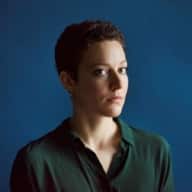Rachel Ruysch’s Flower Still Lifes Are Explosions of Colour
In the past, female artists have not always been valued. Most were overshadowed by their male counterparts, excluded from education and the art world, so that their names never appear in the history books. Heleen Debruyne takes them out of oblivion and gives them the honour they deserve. In the last episode of our series we present you Rachel Ruysch: ‘She could keep pace with the best when it came to painting with the finest brushes.’
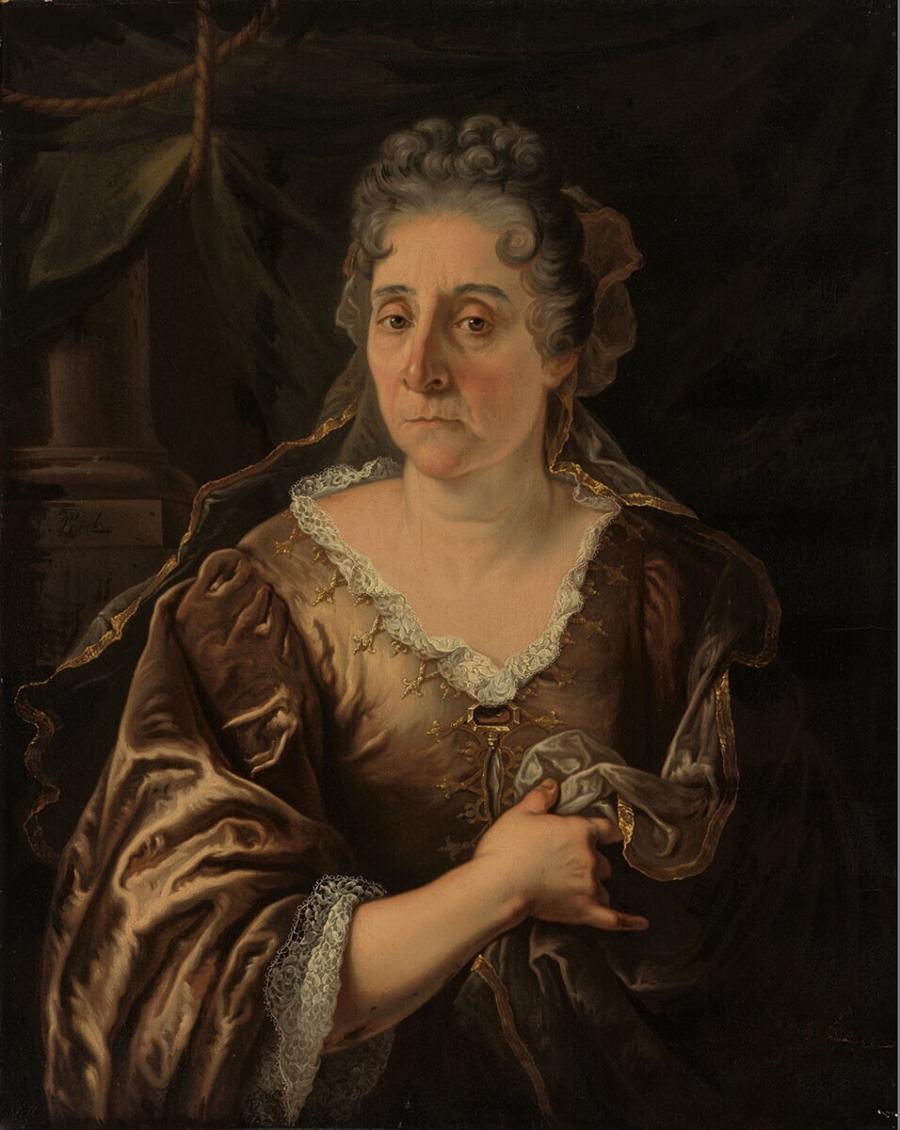 Jurriaan Pool, Portrait of Rachel Booijmans, 1672
Jurriaan Pool, Portrait of Rachel Booijmans, 1672© Museum Booijmans Van Beuningen, Rotterdam
Little Rachel grew up surrounded by curiosities. Carefully prepared corpses of children that looked uncannily as if they were sleeping. Body parts preserved in formalin. Animals preserved through taxidermy. Rare plants. Skeletons of foetuses on top of a mountain of kidney stones amongst blood vessels. A preserved baby’s arm holding a vulva.
That’s how it is when you are the daughter of an anatomist and botanist in Golden Age Amsterdam. Frederik Ruysch was a scientist who taught future surgeons the workings of the human body. After work, he would hide in his laboratory and develop new methods of preserving human tissue. Of course, in the 18th century, the line between art and science was less visible than it is today: Frederik gave his fancies free rein and often sketched his creations. His collection of prepared anatomical specimens and oddities became a tourist must-see.
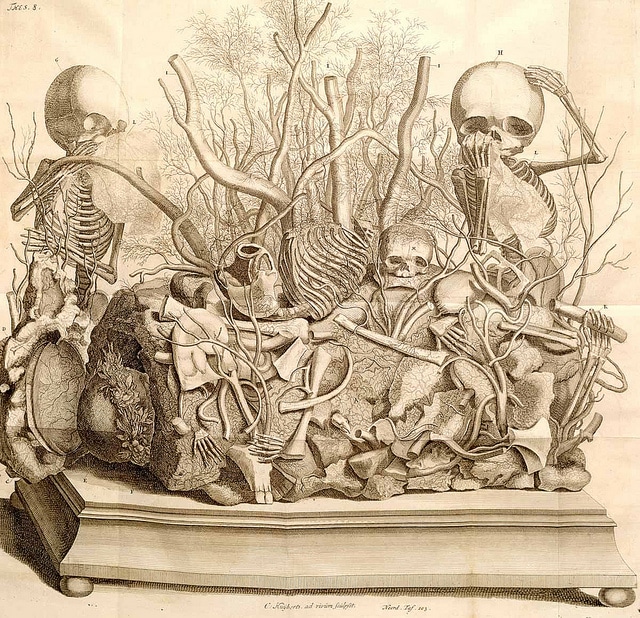 Engraving of a tableau by Frederik Ruysch, 1744
Engraving of a tableau by Frederik Ruysch, 1744© National Library of Medicine, Bethesda
This was undoubtedly an inspiring environment for his eldest daughter, Rachel, who could draw and paint exceptionally well from a young age. Was it genetic? Her great uncle and uncles on her mother’s side were also painters. Her parents could not ignore her talent and, in 1678, they allowed her to start training with an art teacher at the age of 14. It was quite unusual that the artistic ambitions of a daughter were taken so seriously. Daughters of good families did paint, but mainly at home as a hobby. Rachel, however, was allowed to learn from one of her parents’ acquaintances, the famed still life painter, Willem van Aelst.
There, Rachel learned how to paint ‘sylvan scenes’: compositions of plants and shrubs full of creeping, crawling insects, toads and snakes that require a combination of technical skill and an eye for precise observation. Everything must be true to nature, right down to the tiniest details. Rachel could keep pace with the best when it came to painting with the finest brushes or sponges dipped in paint to give texture to the moss on the trees.
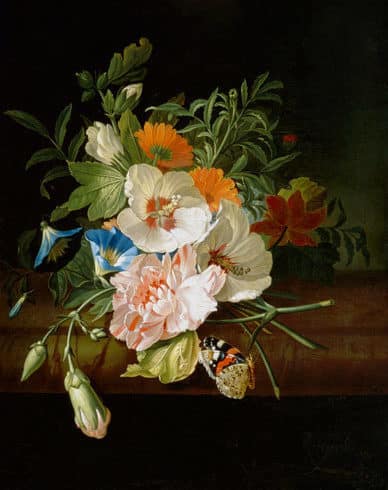
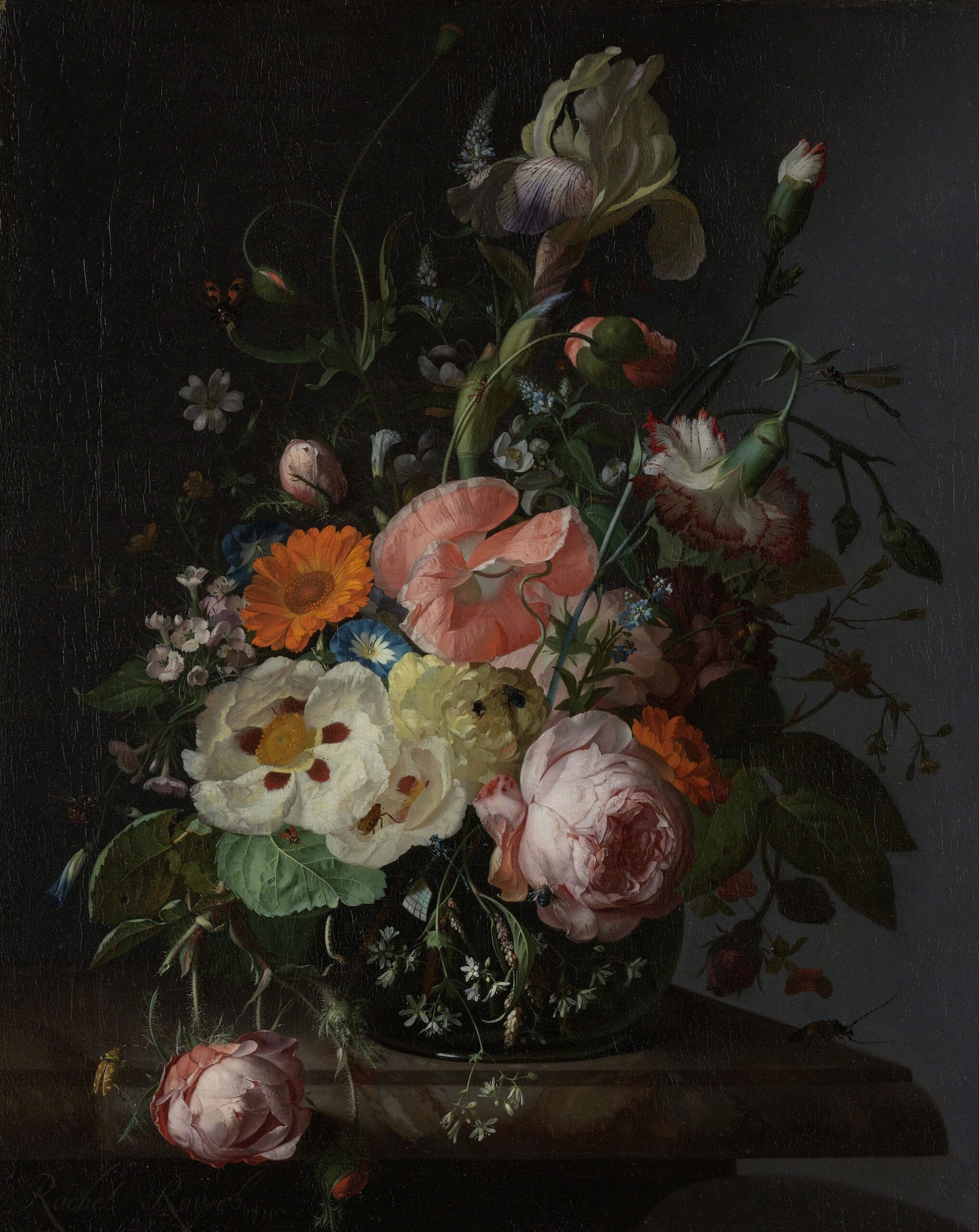 Rachel Ruysch, Posy of Flowers with a Red Admiral Butterfly on a Marble Ledge, ca 1700 / Still Life with Flowers on a Marble Tabletop, 1716
Rachel Ruysch, Posy of Flowers with a Red Admiral Butterfly on a Marble Ledge, ca 1700 / Still Life with Flowers on a Marble Tabletop, 1716© private collection / © Rijkmuseum, Amsterdam
She also specialised in still lifes of flowers. Her father’s botanical collection served her well. He had come up with a way to preserve flowers without drying them, so they looked fresh and alive. Rachel could use them to create bouquets of flowers that bloomed in different seasons, something that was not possible in reality. Her paintings feature generous explosions of colour and texture dramatically alight against sober, usually dark, backgrounds. These compositions symbolised the awesome power of nature, and thus of the Creation. She understood the tenor of the times: still lifes of flowers were becoming very popular and Rachel’s work sold well.
At age 30 she married the painter Jurriaan Pool, an orphan who had risen above his circumstances to become a painter of portraits and allegories. Shortly thereafter, she had her first child – another nine would follow. Most women of her time and from her background limited themselves to the roles of wife and mother. Not Rachel: this working mum knew how to combine nurturing and art, defying the expectations of society: she simply continued to paint. And with ever-increasing notoriety. In 1699, she was the first woman to become a member of the painters’ brotherhood Pictura in Den Haag. Eager customers were forced to order her still lifes months in advance.
 Rachel Ruysch, Still Life with Fruit, a Nest and a Lizard
Rachel Ruysch, Still Life with Fruit, a Nest and a Lizard© private collection
In 1708, Ruysch became the court painter of the Elector of the Palatinate. Because she did not want to move her household to Dusseldorf, the Elector agreed that she could remain in Amsterdam if she delivered one painting to him every year. Her interactions with the Elector were positive: she named her last child, born when she was 47 years old, Jan Willem, after him. He and his wife were godparents and presented the baby with a gold medallion, and his mother with an expensive vanity table containing 28 silver parts. Her husband Jurriaan was not jealous that Rachel’s career surpassed his. In the Spring of 1711, the couple received the German intellectual Zacharias Conrad von Uffenbach, with whom Rachel had an extensive correspondence. Jurriaan proudly told the German that his wife surpassed all the masters, past and present.
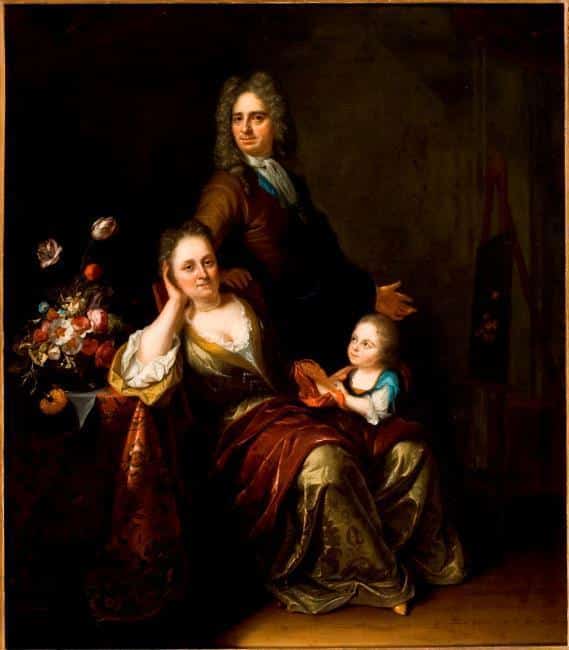 Jurriaan Pool, Familieportret van Rachel Ruysch, Jurriaan Pool en Jan Willem, 1716
Jurriaan Pool, Familieportret van Rachel Ruysch, Jurriaan Pool en Jan Willem, 1716© Stadtmuseum Düsseldorf
In a family portrait of himself, Rachel and their son Jan Willem, done by Jurriaan in 1716, they seem relaxed, prosperous and happy together. Rachel sits most in the light. And if all this happiness was not enough, in 1723 they won an enormous amount of money in the state lottery.
A successful career, plenty of money and marital harmony did not, unfortunately, protect Rachel from the same fate as so many mothers of her day. She outlived most of her children. Three died in childhood, one daughter as a teenager and two sons in their twenties. Her daughter Maria Margaretha was only 35 when she passed. According to her correspondence, her son Isaac, was a constant worry, ‘continually behaving improperly and irresponsibly towards his parents’. The worries continued until 1749. Rachel, a widow in her eighties who, according to the painter/biographer Johan van Gool, ‘had neither the judgement nor face of a woman of that great age’, continued producing valuable artworks until her death on 12 October 1750.

